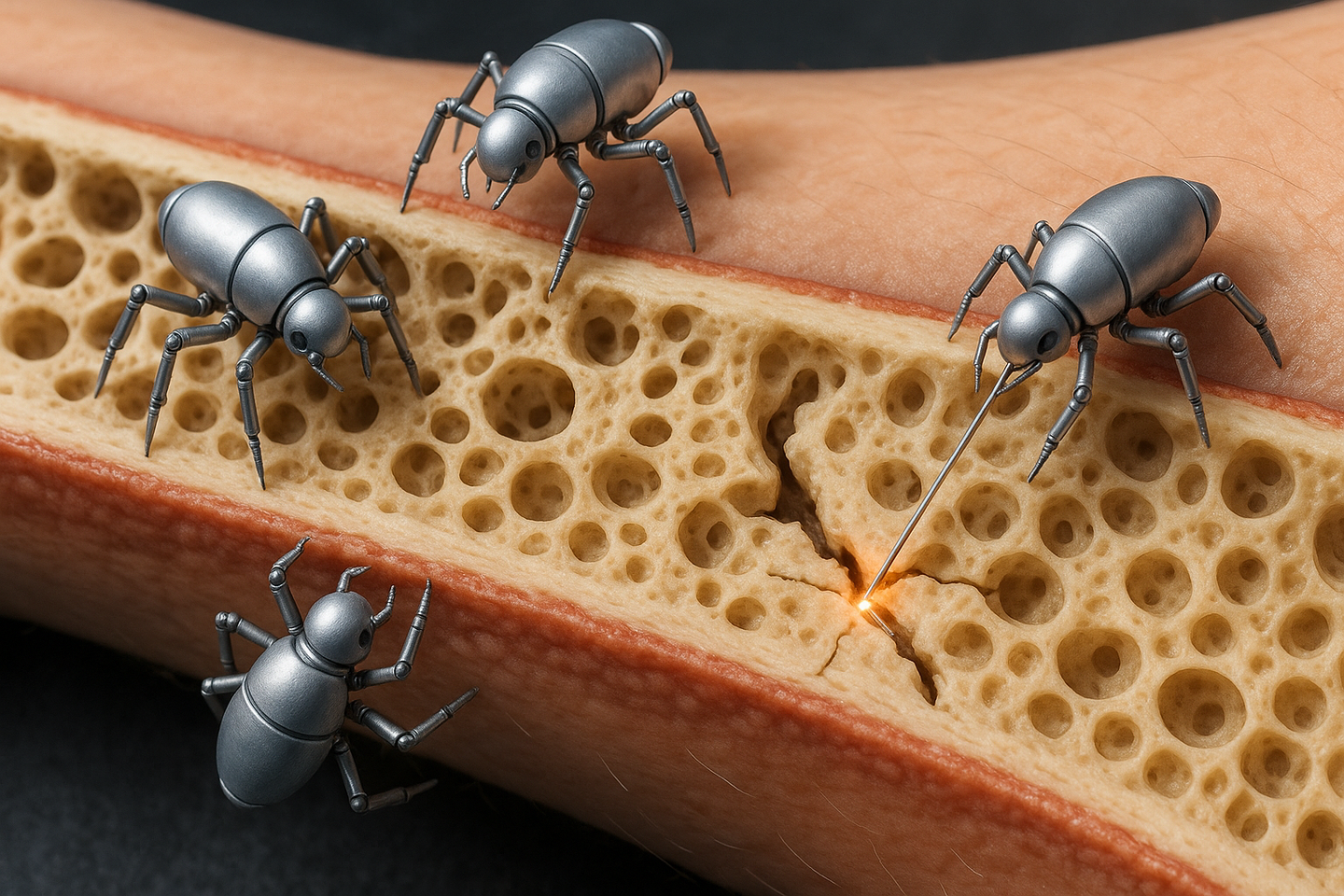New research links common dietary fat found in eggs to fast-growing breast cancer
Study links common dietary fat to faster growth of triple-negative breast cancer, revealing a biological pathway behind the effect.

Scientists reveal how linoleic acid (found in eggs) fuels triple-negative breast cancer. (CREDIT: Shutterstock Images)
Scientists have uncovered a striking connection between a common fat in the modern diet and one of the most aggressive forms of breast cancer. The research zeroes in on linoleic acid—a type of omega-6 fat found in foods such as eggs, meat, soybeans, and popular seed oils—and shows how it can drive tumor growth in triple-negative breast cancer by activating a key cellular growth switch.
The Nutrient-Growth Connection
Every cell in your body has to balance growth with the nutrients it takes in, and cancer cells are no different. One of the main control systems for this balance is a network called mTORC1, which acts like a sensor, telling cells when to grow and divide based on nutrient availability. While this pathway is known to be disrupted in nearly half of all breast cancers, most research has focused on how sugar and amino acids affect it.
Fats—especially essential ones your body can’t make on its own—have been less studied in this context. Linoleic acid (omega-6) and alpha-linolenic acid (omega-3) are two such fats, each playing very different roles. Omega-6 fats tend to promote inflammation, while omega-3s usually calm it. Until now, scientists hadn’t clearly shown how omega-6 fats might directly switch on cancer cell growth at the molecular level.
Why Triple-Negative Breast Cancer Is Different
Triple-negative breast cancer lacks three major receptors—estrogen, progesterone, and HER2—that are common targets for treatment. Without these, the cancer is harder to treat, tends to spread faster, and affects younger patients more often. This new study, published in Science, found that linoleic acid can activate mTORC1 in triple-negative cells but not in other breast cancer types.
The key is a protein called FABP5, which works as a fatty acid transporter. Triple-negative tumors churn out high amounts of FABP5. When linoleic acid binds to it, a chain reaction begins, flipping the “on” switch for mTORC1 and accelerating tumor growth.
“We now know that linoleic acid feeds cancer cell growth in a very specific way,” said senior author Dr. John Blenis, the Anna-Maria and Stephen Kellen Professor of Cancer Research at Weill Cornell Medicine. “This discovery helps clarify the relationship between dietary fats and cancer, and sheds light on how to define which patients might benefit the most from specific nutritional recommendations in a personalized manner.”
Related Stories
- Bee venom rapidly targets and kills aggressive breast cancer cells
- Weight-loss drug Tirzepatide significantly slows breast cancer growth, study finds
Testing in Mice and Patients
The team confirmed the connection in mice with triple-negative breast cancer. Animals on a high-linoleic-acid diet developed larger tumors, showed greater FABP5 activity, and had higher mTORC1 activation.
To see if the same was true in people, researchers examined blood and tumor samples from recently diagnosed patients. The pattern was clear: those with higher linoleic acid levels also had more FABP5. This is the first time a direct biological link has been shown between a common dietary fat and the progression of this cancer subtype.
Dr. Nikos Koundouros, the study’s first author, noted that the implications may extend beyond breast cancer. “There may be a broader role for FABP5-mTORC1 signaling in other cancer types and even in common chronic diseases such as obesity and diabetes,” he said. The team has already spotted early signs of a similar fatty acid-FABP5 link in some prostate cancers.
Diet, Disease, and a Shifting View of Fats
Linoleic acid is the most widely consumed unsaturated fat in many parts of the world, especially where processed and fried foods dominate. Its use has surged since the 1950s alongside the popularity of seed oils. While health experts have long debated whether omega-6 fats are harmful, past studies often produced mixed results because they didn’t pinpoint the exact biology behind any possible harm.
This research changes the conversation by showing that the impact of linoleic acid is not universal but depends on specific conditions inside cancer cells. For triple-negative breast cancer, it appears to act like a growth booster—something doctors may now be able to track and manage.
Past Studies and Findings
Over the decades, research into the health effects of omega-6 fats has been divided. Some large population studies linked high intake to inflammation and potentially higher cancer risk, while others found no direct connection. One challenge has been that these studies looked at overall diet patterns without measuring specific biological mechanisms.
Earlier laboratory work suggested omega-3 fats might slow tumor growth in certain cancers, while omega-6 fats could encourage it, but these effects varied widely depending on the cancer type and experimental model. In breast cancer research, the focus had largely been on sugar metabolism and amino acid use by cancer cells, leaving the role of fats less explored.
What This Could Mean for Future Care
The findings open the door for more personalized nutrition strategies. If a patient’s tumor shows high FABP5 levels, reducing linoleic acid intake might help slow cancer growth. While this wouldn’t replace standard treatment, it could support it. FABP5 might also become a biomarker, helping doctors decide which patients could benefit from dietary changes or drugs that block this pathway.
“There is a real opportunity here to tailor nutrition in a smarter way,” Dr. Blenis said. “We’ve gone beyond population-level guesses and into the biology of each patient’s disease.”
The researchers are now testing whether blocking FABP5 or mTORC1 can be developed into new treatments, and they’re studying how this pathway functions in other metabolic diseases.
Other Common Foods Containing Linoleic Acids
Linoleic acid is an omega-6 polyunsaturated fatty acid found in a variety of plant-based oils, seeds, nuts, and some animal products. Here’s a list of common foods that are notable sources:
Vegetable and Seed Oils (highest concentrations)
- Canola oil (moderate amount)
- Corn oil
- Cottonseed oil
- Grapeseed oil
- Safflower oil
- Sesame oil
- Soybean oil
- Sunflower oil
Nuts and Seeds
- Brazil nuts
- Pine nuts
- Pumpkin seeds
- Sesame seeds
- Sunflower seeds
- Walnuts
Legumes and Grains
- Oats (small amounts)
- Peanuts and peanut butter
- Soybeans and soy products (tofu, tempeh)
Animal-Based Sources (from diet of the animal)
- Certain dairy products from grain-fed animals
- Chicken fat (especially from grain-fed poultry)
- Eggs from grain-fed hens
- Pork fat (especially from grain-fed pigs)
Other Foods
- Mayonnaise and salad dressings (made with vegetable oils)
- Snack foods (chips, crackers, baked goods containing vegetable oils)
A Step Toward More Targeted Nutrition
For years, the health debate around omega-6 fats like linoleic acid has been broad and inconclusive. Now, there’s strong evidence that under certain circumstances, one of these fats can act as fuel for cancer growth.
The hope is that with tools to measure how diet interacts with cancer biology, patients and doctors can make better-informed choices—especially for a cancer type where new treatment options are urgently needed.
Note: The article above provided above by The Brighter Side of News.
Like these kind of feel good stories? Get The Brighter Side of News' newsletter.



